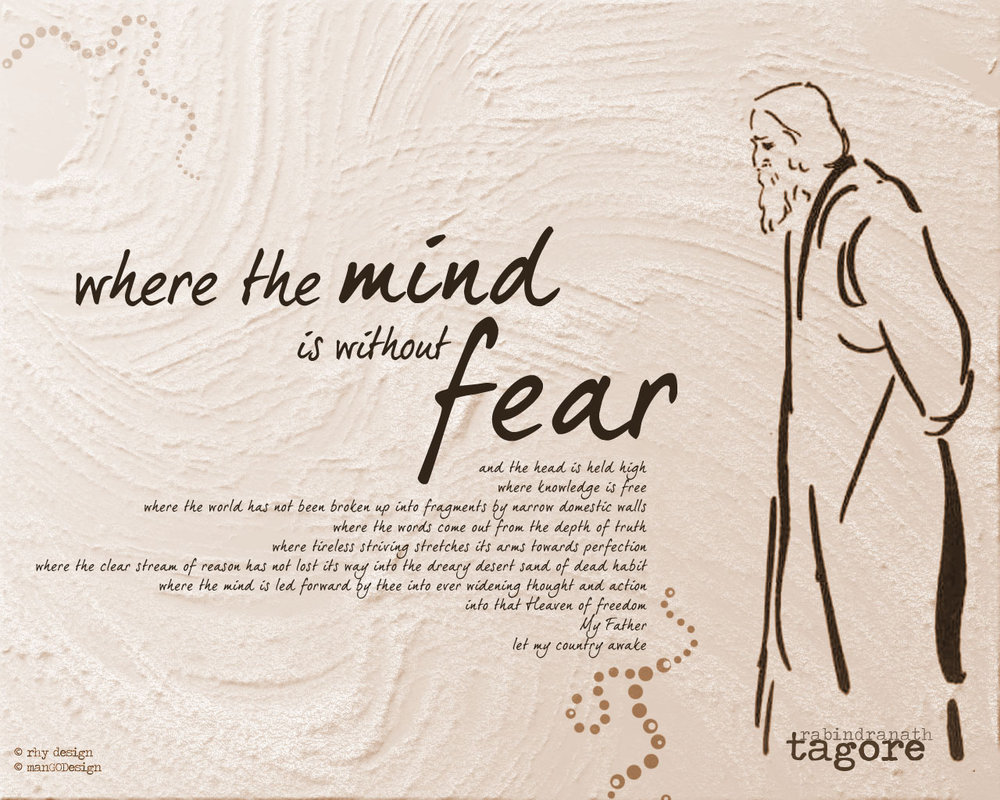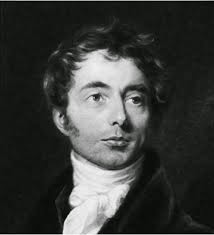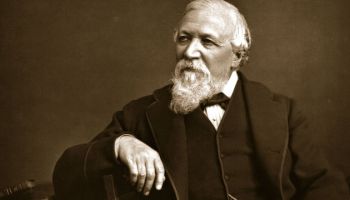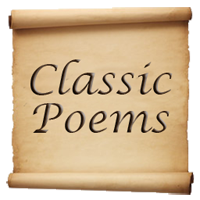Introduction to RALPH WALDO EMERSON (1803-1882):
The pioneer of transcendentalist movement, Ralph Waldo Emerson, was also known for his essays, lectures and poetry. The nineteenth century American poet became the torchbearer of individualism and the very same quality kept him at an arm’s length from his contemporaries. Born in Boston, Massachusetts, Emerson has a pure English ancestry. The student years of his life were not as bright as his poetic career. As he reached his twilight years, Emerson started suffering from aphasia, which diminished his literary contributions and ultimately gave into pneumonia on 21 April 1882.
SETTING OF CONCORD HYMN:
The lyric has a dominant portrayal of war front. The term “concord” means “agreement or harmony between people or groups”. The poem that was presented on July 4, 1837, at the Completion of the Battle Monument, speaks about a harmony attained after things went berserk. The poem was sung in dedication to the Obelisk, a monument in Concord, Massachusetts that commemorates the Battle of Concord, and the American Revolution that broke out in 1775. The setting “Concord” was the dwelling place of the poet coincidentally.
POETIC DEVICES IN CONCORD HYMN:
Allusion:
the American Revolution, and the specific battle at Concord.
Alliteration:
“silence slept” (line 5)
“silent sleeps” (line 6)
Assonance:
“deeds redeem” (line 11)
Personification:
“rude bridge”
Metaphor:
“embattled farmers”(line 3)
-Soldiers of peace.
“And fired the shot heard round the world.”(line 4)
-the first shots that marked the beginning of the great American revolution.
“votive stone;” (line 10)
-monument in remembrance of the American Revolution.
STYLE OF CONCORD HYMN:
By the rude bridge that arched the flood, (A)
Their flag to April’s breeze unfurled, (B)
Here once the embattled farmers stood(A)
And fired the shot heard round the world. (B)
The foe long since in silence slept; (C)
Alike the conqueror silent sleeps; (D)
And Time the ruined bridge has swept(C)
Down the dark stream which seaward creeps. (D)
On this green bank, by this soft stream, (E)
We set today a votive stone; (F)
That memory may their deed redeem, (E)
When, like our sires, our sons are gone. (F)
Spirit, that made those heroes dare(G)
To die, and leave their children free, (H)
Bid Time and Nature gently spare(G)
The shaft we raise to them and thee. (H)
SUMMARY OF CONCORD HYMN:
The speaker of the poem begins the poem by giving the reader a clear-cut picture of what had happened at the place, which the speaker was indicating in the poem. The place with a bridge that withstood proud against all the floods had an army of farmers who marked the beginning of the greatest revolution of all the times. The flag of independence unfurled in the April breeze giving the soldiers strength to fight against the trained British troops. There is an assertion of the location by the usage of “here” in the third line so that the reader does not forget the revered location where all of it began.
The reason for this assertion can be deduced from the subsequent stanza. With time, the bridge stopped being recognised and the memory it stood slowly faded into oblivion. Though the revolution that had impact around the world began here, the entire world forgot its significance. Neither the conqueror nor the foe any longer remembered its existence. It was left unattended and unrecognised.
Third stanza speaks of how efforts are taken to redeem this forgetfulness through the installation of a monument beside the stream in remembrance of the martyrs and the ideals that they stood for which set fire for the greatest of all revolutions. The monument shall be a reminder to the generation that shall come after the living exponents of the revolution are long dead. This can be understood as an effort to not give into the mortality of human memory of the moments that changed the history altogether.
The men had taken arms to defend their land and independence to leave their children a secure free world. They had died to let their future generation live. Such heroes are to revered beyond time and remembered in every breathe. Therefore, the speaker asks the nature and its dwellers to preserve the monument that was built as a remainder to the sacrifice of those brave men and not let those ideals die into obscurity with time.
ANALYSIS OF CONCORD HYMN:
The setting of the poem is clearly indicated in the first stanza in detail with reference of the time and location of the first shot that was fired marking the beginning of the American Revolution. The “rude bridge” referred is the Old North Bridge in Concord, and the flag indicated is the custom of the American troops carrying the American flag into battle. The “April breeze” defines the month and farmers where the people who paid price for America’s independence. The stanza end with a vivid indication towards the dedication that is made to the American Revolution.
The next two stanzas are more figurative than the first one. It speaks about the shot that broke the silence of mute torture and that of the eruption of a symbol of remembrance to the martyrdom. The stanzas are clear indication towards the mortality of human life as well as memory.
In the final stanza with the capitalization of “Time” and “Nature” there is a spiritual indication towards preservation of the ideals that brought freedom to the future generations of America. The poem is gentle reminder about those values and ideals of life for which the ancestors gave up their life and a call for duty to the generation long ahead of the dead.
TONE OF CONCORD HYMN:
The poem is significantly a revered note of a proud American whose patriotism is evident throughout the stanzas of the poem. With a tone of plea and genuine concern, the poet tries to embark the emotions of a gratified receiver of the benefits of the American Revolution into the reader’s mind. The emotions are pure as well as true. Each stanza stands for different emotions the poet goes through while remembering the revolution.
EMERSON’S STYLE IN CONCORD HYMN:
With eight syllables in each line, the “Concord Hymn” has four quatrains with each line following iambic tetrameter style, and has a typical external rhyme scheme of ABAB, which alternates from line to line. The poem is pregnant with various literary devices throughout and the poet even takes the liberty to shift the word arrangement to fit in the set rhyme scheme (line 6 and 8).
CENTRAL IDEA OF CONCORD HYMN:
The poem was sung in dedication to the martyrs of the great American Revolution. It is the tale of all those farmers who went into the war-front to fight against their foes for independence. This was a battle that changed the history of world, and the poet does not like the idea of the coming generations forgetting the hardships of those who gave up their life for the independence of the future generations. Certain moments of history are a lesson to be preserved beyond the mortality of human life and memory, and this is one such moment.
CONCLUSION
Emerson through his Concord Hymn reach out to the generation that no longer pay attention to the toil of those brave hearts whose death gave them a birth of independence. The poem is a reminder in itself with repeated reference of the location that marked the beginning of the revolution and the monument built in remembrance to the event that marked the annals of history. Today though all the reminiscent of the war are long gone with neither the enemy nor the conqueror any longer available, there is a good chance that the deeds of those brave souls shall be forgotten in a matter of time. So the poet urges the readers to preserve the ideals by taking care of the monument built acknowledging their ancestors.
Contributor: Safvana Yasmine
Some online learning platforms provide certifications, while others are designed to simply grow your skills in your personal and professional life. Including Masterclass and Coursera, here are our recommendations for the best online learning platforms you can sign up for today.
The 7 Best Online Learning Platforms of 2022
- Best Overall: Coursera
- Best for Niche Topics: Udemy
- Best for Creative Fields: Skillshare
- Best for Celebrity Lessons: MasterClass
- Best for STEM: EdX
- Best for Career Building: Udacity
- Best for Data Learning: Pluralsight
















